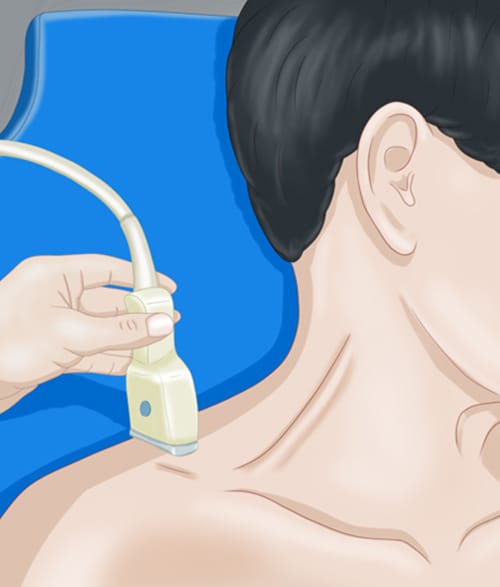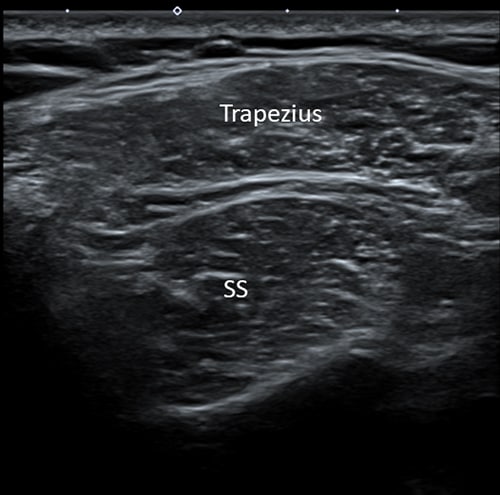Preoperative shear wave elastography (SWE) can predict unsuccessful rotator cuff repair, according to research published in the American Journal of Roentgenology.
In a prospective study, patients with an elasticity ratio of the supraspinatus muscle above 2.5 — calculated using SWE — were more than 15 times more likely to have insufficient repair, independently of the tear size or muscle characteristics evaluated by MRI.
“The findings support a potential role for SWE in prognostic assessment before rotator cuff repair,” the authors write. The study was conducted at the Hallym University Dongtan Sacred Heart Hospital in Hwaseong, Korea, and was published online January 19.
For the study, researchers enrolled 74 patients who were admitted to the hospital from May 2019 through January 2021 to undergo rotator cuff repair. There were 37 men and 37 women, with a mean age of 64 years. Patients underwent a clinical shoulder MRI within 3 months before surgery as well as an investigational shoulder ultrasound using SWE within 2 days before surgery. All elastography ultrasounds were performed by the same musculoskeletal radiologist.
Researchers calculated the elasticity ratio by measuring the mean elasticity of the supraspinatus and trapezius muscles and then calculating the ratio between the two. On MRI, muscular fatty infiltration was assessed by Goutallier’s grade, and muscular atrophy was evaluated by the occupation ratio — the ratio of the supraspinatus muscle to the supraspinatus fossa — as well as muscle atrophy grade.

In SWE, the patient lies in a supine and neutral position and turns their head slightly to the contralateral side. The transducer is initially placed with application of minimal pressure.

The supraspinatus (SS) and trapezius muscles are identified in the transverse plane using SWE.
All surgeries were performed by the same orthopedic surgeon, who saw the MRI interpretations but was blinded to the SWE measurements and MRI assessments of muscle quality. Most patients (70) underwent repairs using the suture-bridge technique. The four remaining patients underwent a modified Mason-Allen technique because of severe retraction of the supraspinatus tendon. For repairs using the suture-bridge technique, insufficient repair was defined by the rotator cuff tendon not covering at least half of the original footprint. In surgeries using the modified Mason-Allen technique, the repair was classified as insufficient when more than 10 mm of the humeral head remained exposed.
After repair, the surgeon classified 60 surgeries as “sufficient” and 14 surgeries as “insufficient.”
All patients with insufficient repair had large tears (3 to 5 cm), compared to half of patients with sufficient repairs. Those with insufficient repairs also exhibited higher muscular fatty infiltration, muscle atrophy, and elasticity compared to patients with sufficient rotator cuff repairs.
| Insufficient | Sufficient | |
|---|---|---|
| Goutallier’s grade (0–4) | 3.8 ± 0.4 | 1.9 ± 1.1 |
| Muscle atrophy grade (0–3) | 2.0 ± 0.8 | 0.5 ± 0.7 |
| Occupation ratio | 0.3 ± 0.1 | 0.6 ± 0.1 |
| Elasticity ratio | 3.66 ± 0.66 | 1.83 ± 0.58 |
| P < .001 for all. |
In a multivariable analysis, the only two factors that independently predicted insufficient repair were a muscular atrophy grade of 2–3 (odds ratio = 9.3; P = .04), measured via MRI, and a SWE-derived elasticity ratio above 2.5 (odds ratio = 15.6; P = .002).

Dr Levon Nazarian
“This particular paper is telling us that elastography, which is a relatively new ultrasound technique, has the ability to assess the health of the rotator cuff muscles and therefore predict who is going to respond well to surgery,” Levon Nazarian, MD, a professor of radiology at Sidney Kimmel Medical College of Thomas Jefferson University in Philadelphia, Pennsylvania, told Medscape Medical News. “If this truly is more accurate than MRI or even as accurate, then it really pushes ultrasound even more to the forefront of how rotator cuffs should be imaged.”
Nazarian also serves as the current president of the American Institute of Ultrasound in Medicine and authored a commentary on the study. He was not involved with the research.
While ultrasound has been found to be comparable to MRI in detecting rotator cuff tears and is generally preferred by patients, he said, MRI is vastly more popular. Many believe that MRI is better at evaluating muscle health and therefore can better predict surgery outcomes. While this new research challenges this assumption, Nazarian emphasized that these findings need to be reproduced before moving forward. Getting reliable results from ultrasound elastography can be difficult, he explained, because of the many different factors at play.
“You move the arm a few degrees to one side, it’s going to give me a very different reading,” he said. Exerting too much pressure with the probe, not using enough gel, and using another type of probe can also give you differences in readings, he said. “What needs to happen is other people need to do this same study or a similar study and see if they can reproduce these findings,” he noted, and if SWE continues to be reliable in predicting rotator cuff repair outcomes, “then we can put it in our tool chest.”
The authors and Nazarian report no relevant financial relationships.
AJR Am J Roentgenol. Published online January 19, 2022. Abstract, Commentary
For more news, follow Medscape on Facebook, Twitter, Instagram, and YouTube.
Source: Read Full Article
